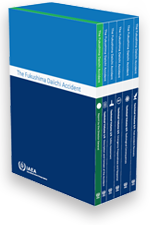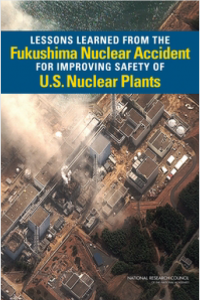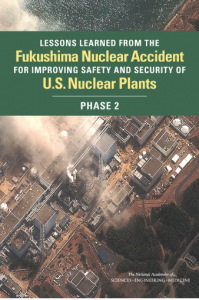Peter Lobner
The International Atomic Energy Agency (IAEA) presents a great volume of information related to the 12 March 2011 Fukushima Daiichi accident and the current status of planning and recovery actions on their website at the following link:
https://www.iaea.org/newscenter/focus/fukushima
From this web page, you can navigate to many resources, including: Fukushima Daiichi Status Updates, 6 September 2013 – Present. Here is the direct link to the status updates:
https://www.iaea.org/newscenter/focus/fukushima/status-update
The IAEA’s voluminous 2015 report, The Fukushima Daiichi Accident, consists of the Report by the IAEA Director General and five technical volumes. The IAEA states that this report is the result of an extensive international collaborative effort involving five working groups with about 180 experts from 42 Member States with and without nuclear power programs and several international bodies. It provides a description of the accident and its causes, evolution and consequences based on the evaluation of data and information from a large number of sources.
You can download all or part of this report and its technical annexes at the following link to the IAEA website:
http://www-pub.iaea.org/books/IAEABooks/10962/The-Fukushima-Daiichi-Accident
There have been many reports on the Fukushima Daiichi accident and lessons learned. A few of the more recent notable documents are identified briefly below along with the web links from which you can download these documents.
Japan’s Nuclear Regulatory Authority (NRA):
A summary of the NRA’s perspective on Fukushima accident and lessons learned is the subject of the March 2014 presentation, “Lessons Learned from the Fukushima Dai-ichi Accident and Responses in New Regulatory Requirements.” You can download this presentation at the following link:
http://www-pub.iaea.org/iaeameetings/cn233p/OpeningSession/1Fuketa.pdf
National Academy of Sciences:
The U.S. Congress asked the National Academy of Sciences to conduct a technical study on lessons learned from the Fukushima Daiichi accident for improving safety and security of commercial nuclear power plants in the U.S. This study was carried out in two phases. The Phase 1 report, Lessons Learned from the Fukushima Nuclear Accident for Improving Safety of U.S. Nuclear Plants, was issued in 2014, and focused on the causes of the Fukushima Daiichi accident and safety-related lessons learned for improving nuclear plant systems, operations, and regulations exclusive of spent fuel storage.
If you have a MyNAP account, you can download the Phase 1 report at the following link to the National Academies Press website:
The Phase 2 report, Lessons Learned from the Fukushima Accident for Improving Safety and Security of U.S. Nuclear Plants: Phase 2, recently issued in 2016, focuses on three issues: (1) lessons learned from the accident for nuclear plant security, (2) lessons learned for spent fuel storage, and (3) reevaluation of conclusions from previous Academies studies on spent fuel storage.
If you have a MyNAP account, you can download the Phase 2 report at the following link:
U.S. Nuclear Regulatory Commission (NRC):
A summary of the U.S. NRC’s response to the Fukushima accident is contained in the May 2014 presentation, “NRC Update, Fukushima Lessons Learned.” You can download this presentation at the following link:


